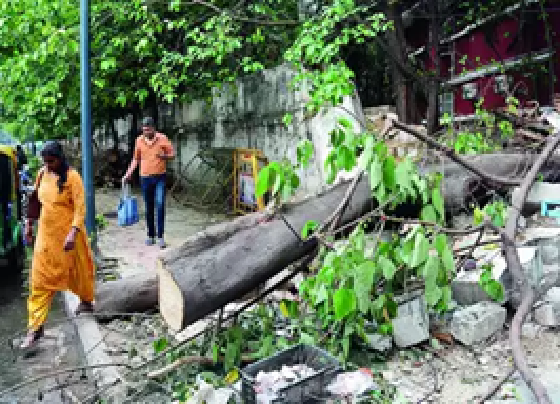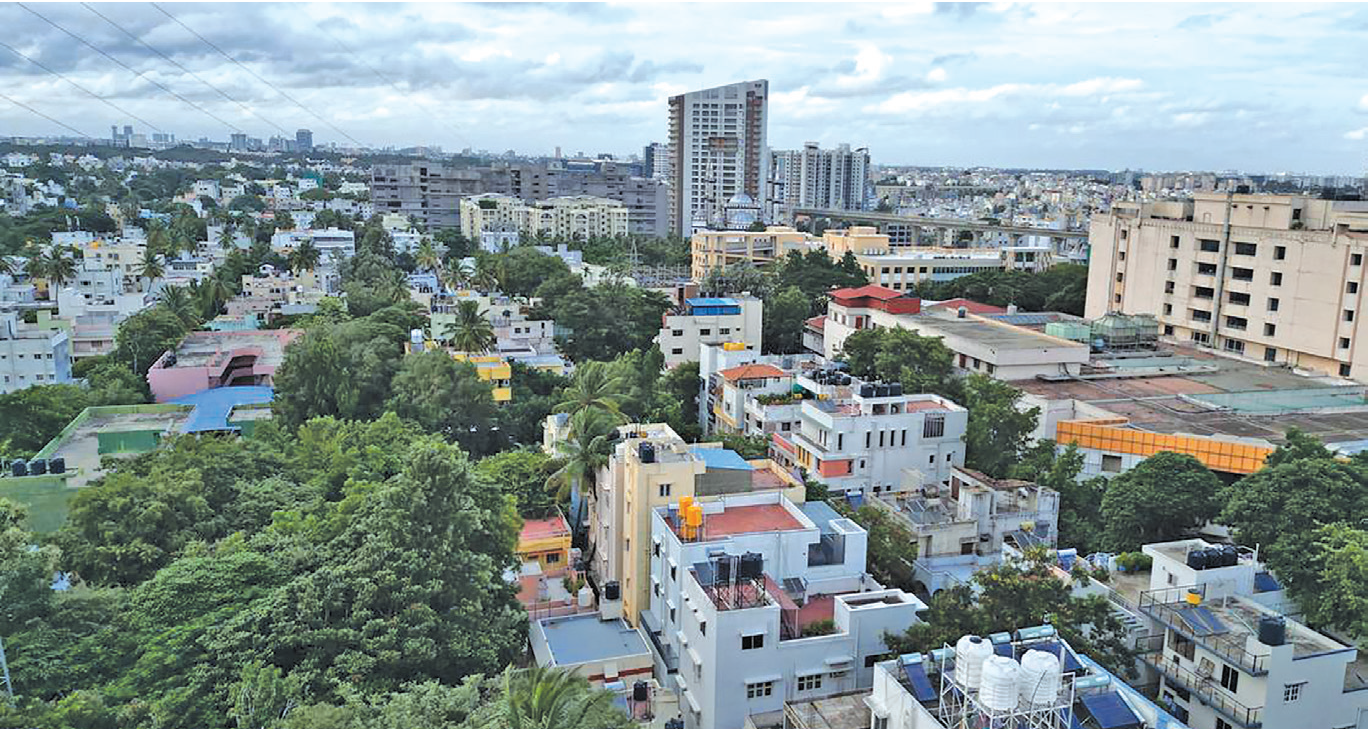
White-topping causes disruption, but is low on maintenance
Rachana Ramesh | NT
Bengaluru:
Recently, Bruhat Bengaluru Mahanagara Palike (BBMP) announced that the white-topping work on Seshadri Road was finished within the decided timeline. But no such luck for shopkeepers, residents and commuters on Good Shed Road.
The white-topping work on this road is still incomplete after BBMP missed several deadlines. This delay not only causes inconvenience to motorists who have to take long detours but also endangers the lives of shopkeepers and residents who stay near the road.
With cement and other debris spread around, the area turns into a dust bowl and is hazardous for health. All this has left Bengalureans wondering if white-topping is even necessary.
Maintenance and repair
While normal asphalted roads are best for vehicles, but when it comes to maintenance, concrete roads are better. They have a much longer lifespan when compared to asphalt roads.
“Tar roads are designed to take a certain amount of load. Despite this, when there is the movement of heavy vehicles like trucks, it leads to all kinds of issues, the major one being potholes. Concrete roads can take a heavy load, making way for less breakage,” explained M.S. Preeti Jacob, Assistant Professor, Civil Engineering, CMRIT.
If the BBMP needs to conduct an underground project which will require the digging out of the roads, the repair of both kinds of roads is equally tedious, she added. “Instead of digging a patch of tar out, they will dig the concrete out. They are both equally hassling tasks,” she added.
Permeability
Both asphalt and concrete roads are designed as impermeable membranes but when there are potholes present in asphalt roads, it leaves room for water to seep through.
To counter the problem of flooding, both kinds of roads must have a good drainage system on either side, said Preeti. For this to be done, skilled labour is required. “You must provide a slight slope which will effortlessly wash away any excess water accumulated on the roads. In India, skill for tar roads is much better in comparison to concrete roads,” she added.
When effective planning and skilled labour are employed, the issue of flooding on concrete roads can be dealt with. Previous concrete, a type of concrete which allows water to seep through, can be used as an alternative.
However, it does not have the capacity to withhold heavy loads. “This concrete can be used only on the sides of the road in order to allow rainwater to seep through. But if the water is contaminated with sewage, silt, or sediments, it will clog the concrete and further aggravate the issue,” she elaborated.
Safety
From the perspective of the vehicle, for tyre life, tar roads are best since they have the capacity to take heavy loads, but concrete tends to react back. “The load exerted by the tyre is dispersed uniformly on the tar roads, but when it comes to concrete roads, the dispersion does not take place smoothly,” Preeti said.
Since the chances of potholes occurring on concrete roads are also close to minimal, the odds of accidents are much lower. When the concrete roads are provided with enough friction, they are safe to ride on, but on occasion, debris of cement can be found on the roads, which reduces the friction.
“If the design is well-made, the chances of such depositions are very small,” she added. However, in the case of accidents, the brunt of the impact faced by the passengers is much higher when compared with accidents on the asphalted roads.
 English daily published in Bengaluru & Doha
English daily published in Bengaluru & Doha






